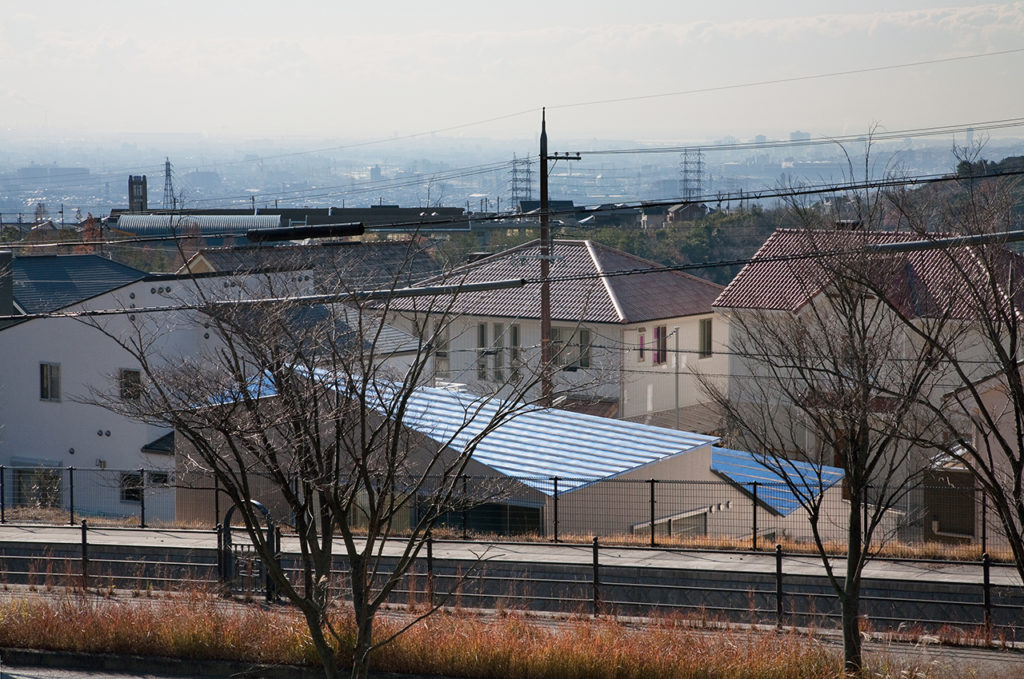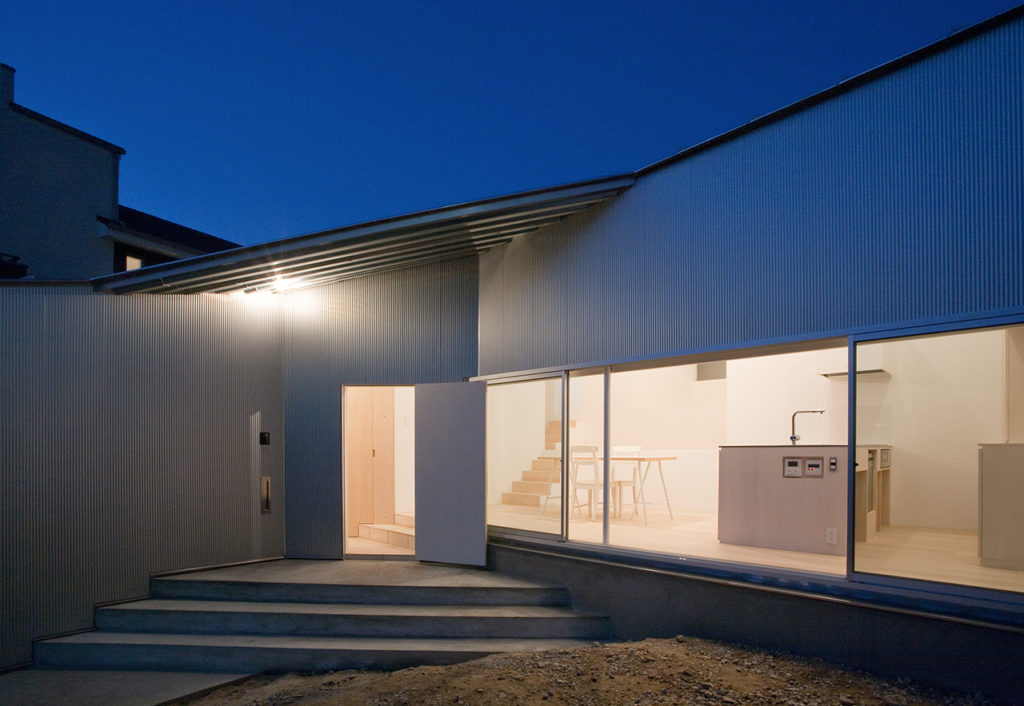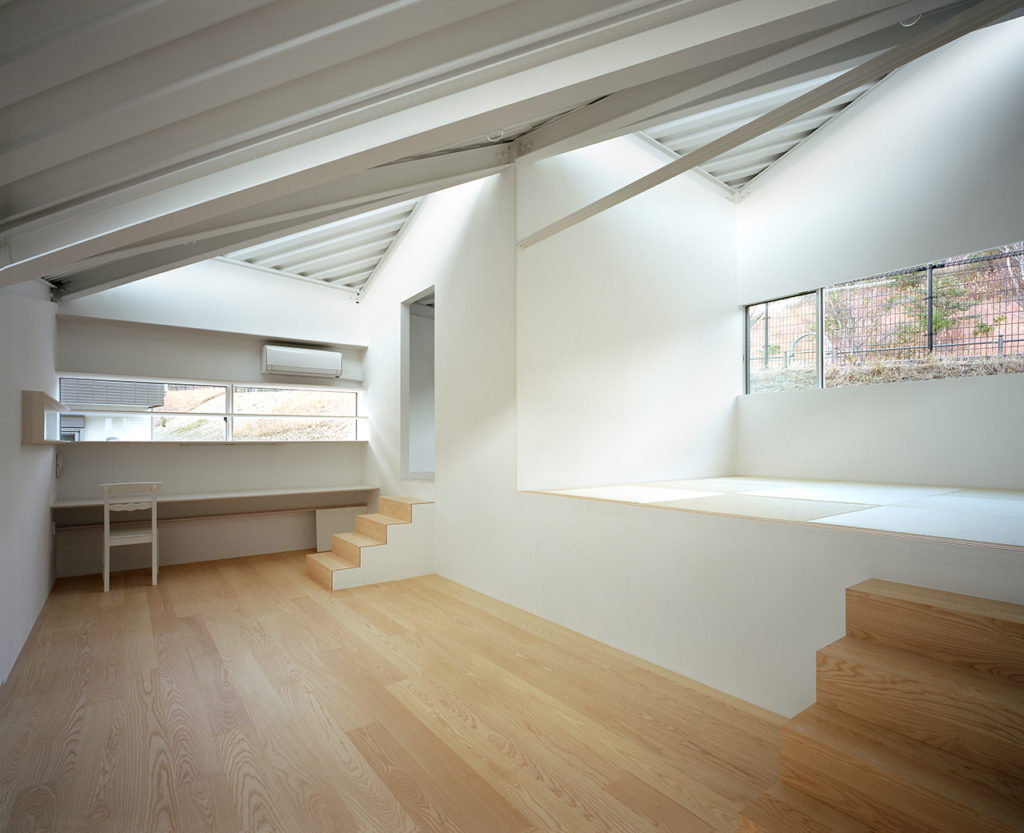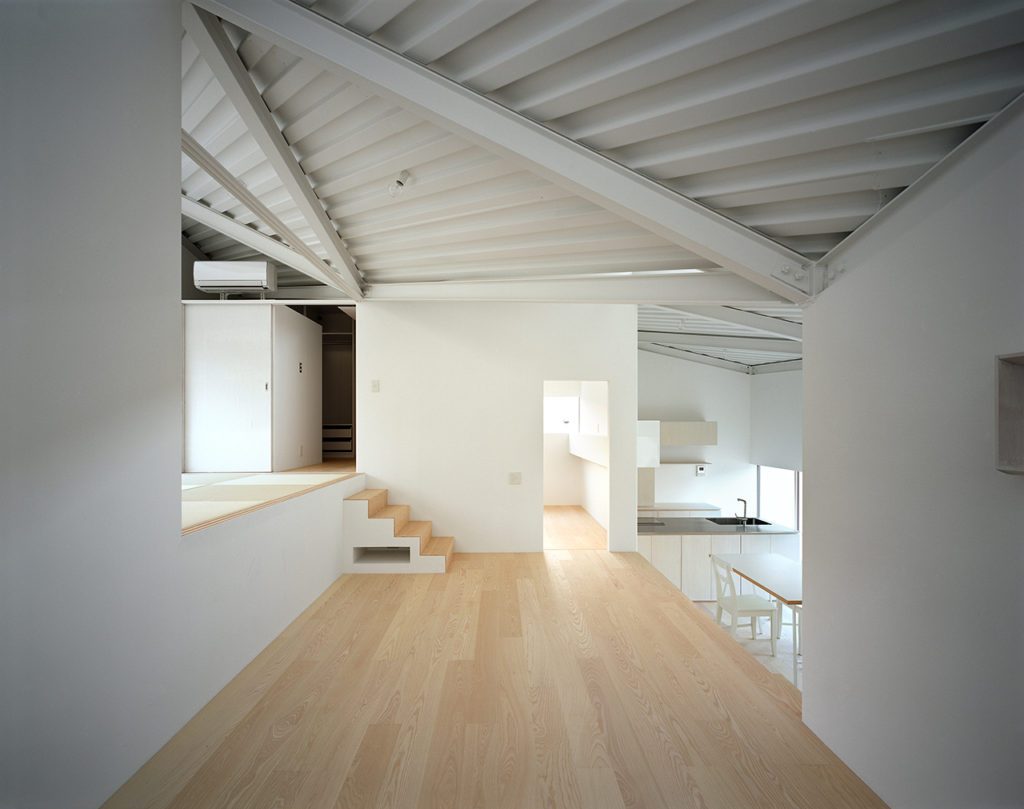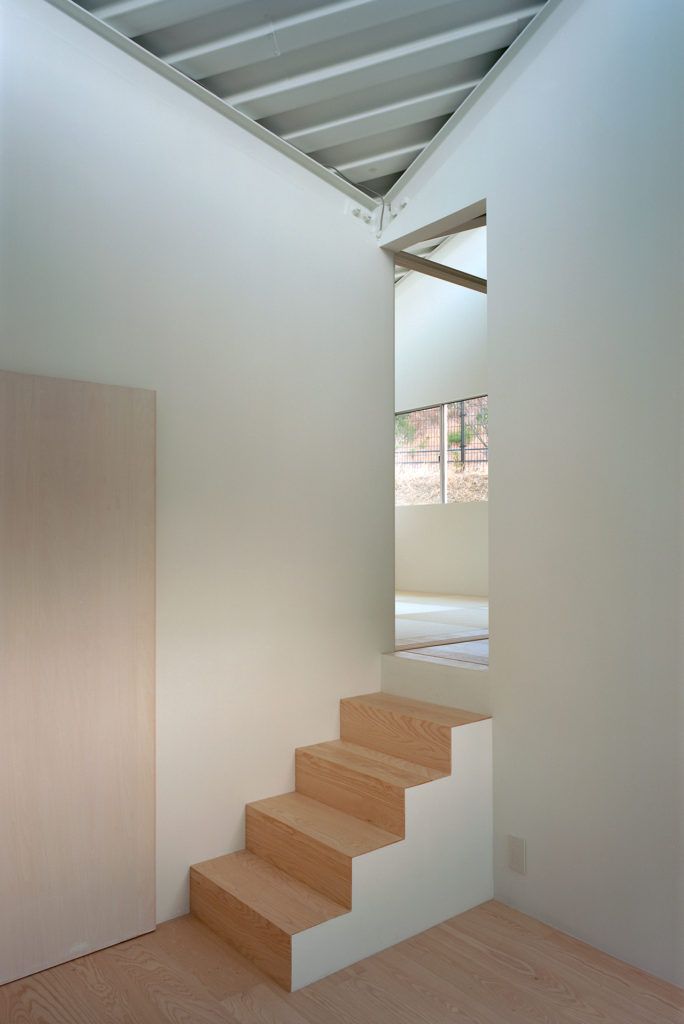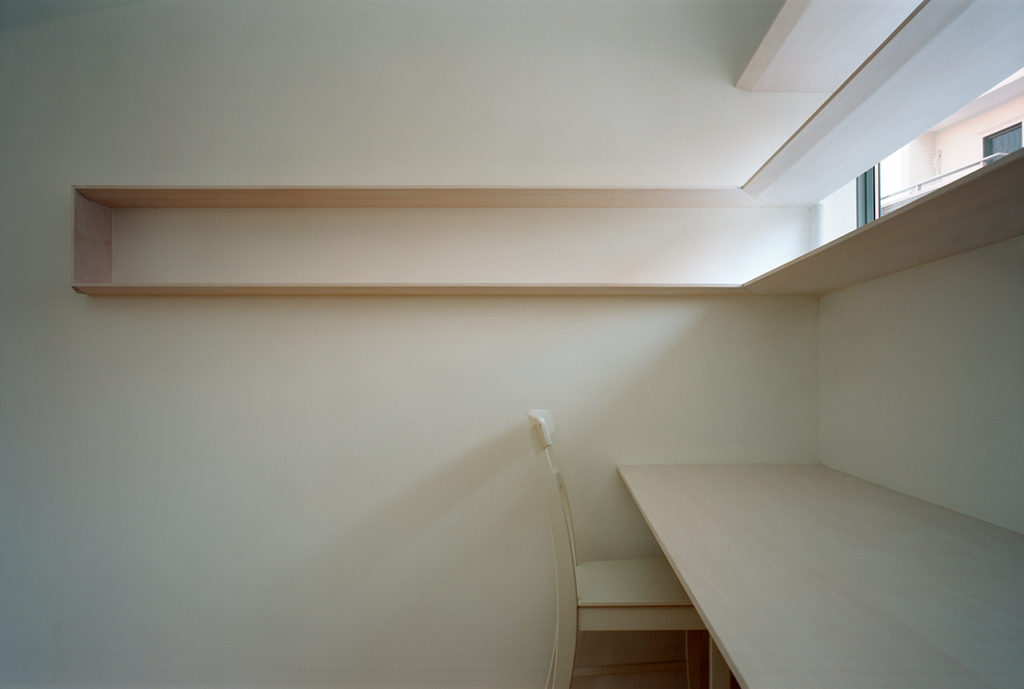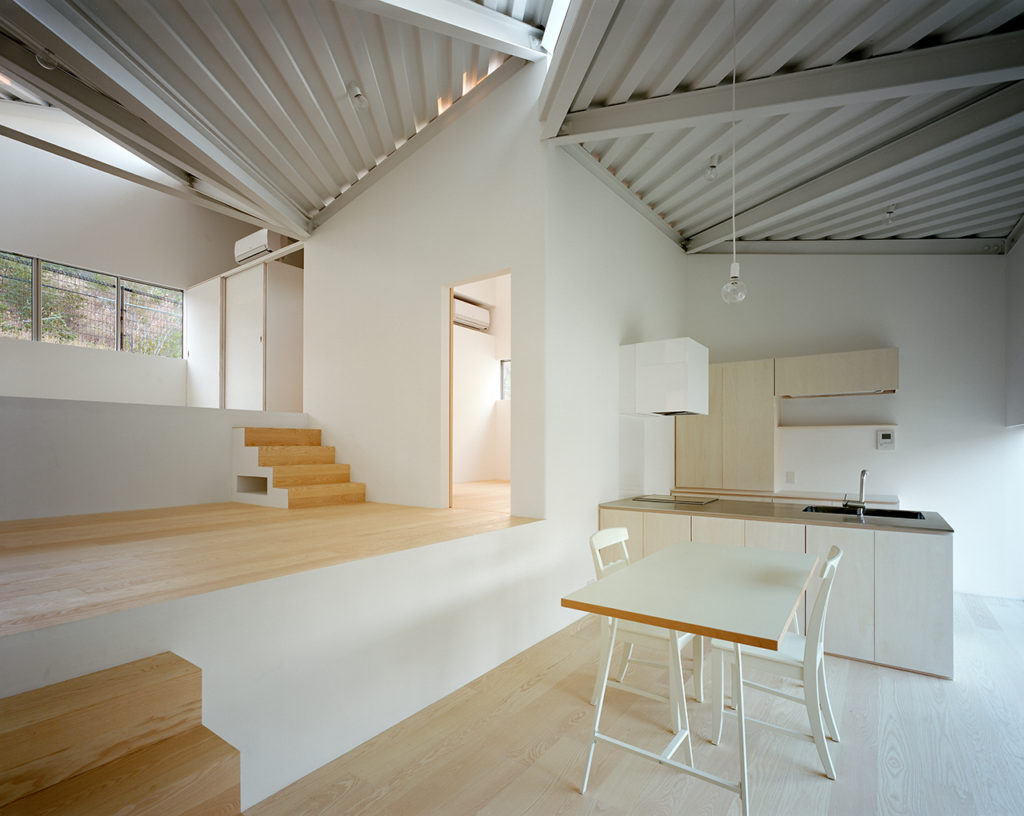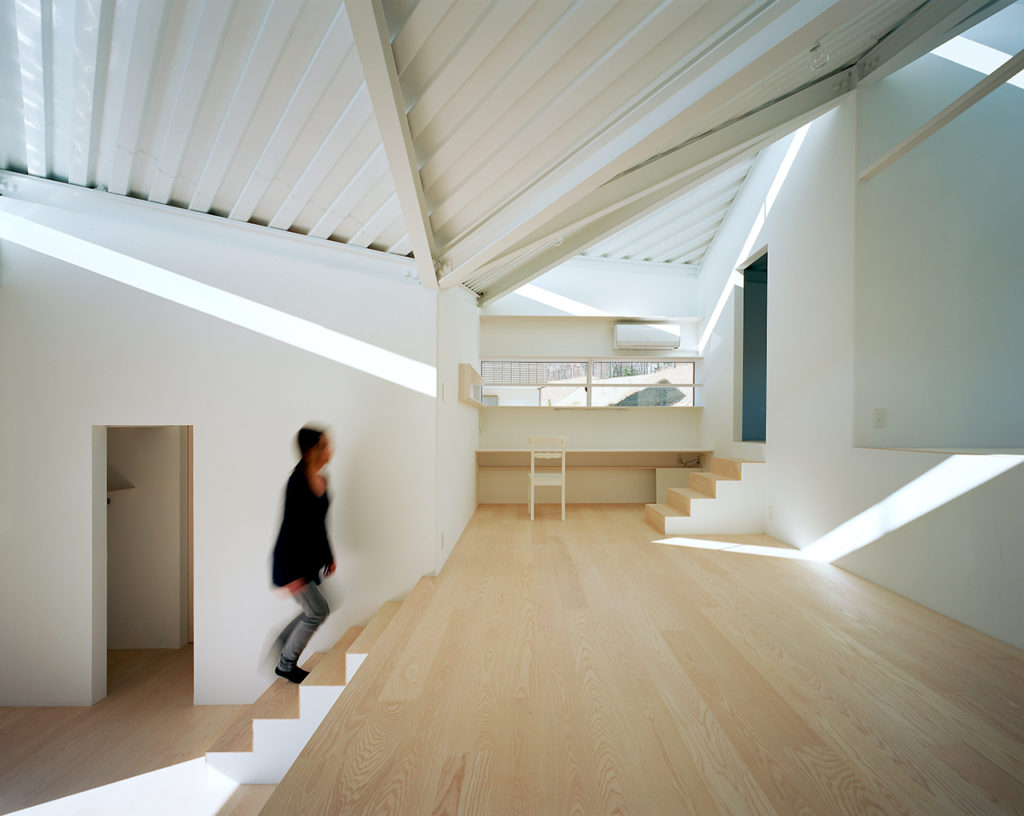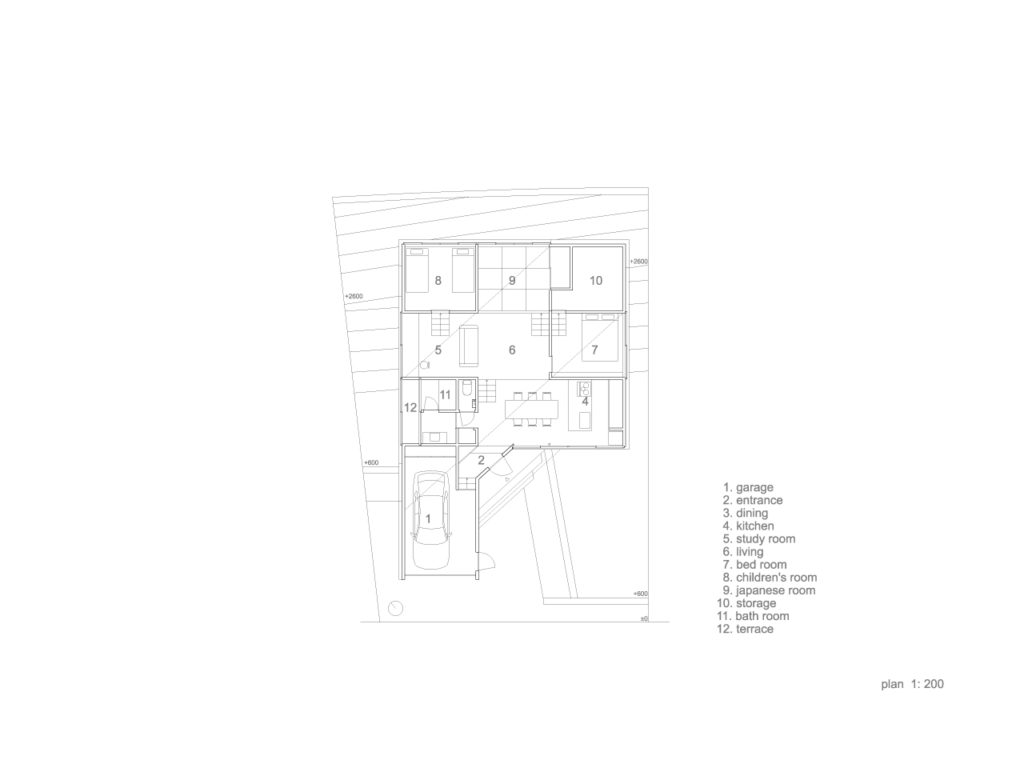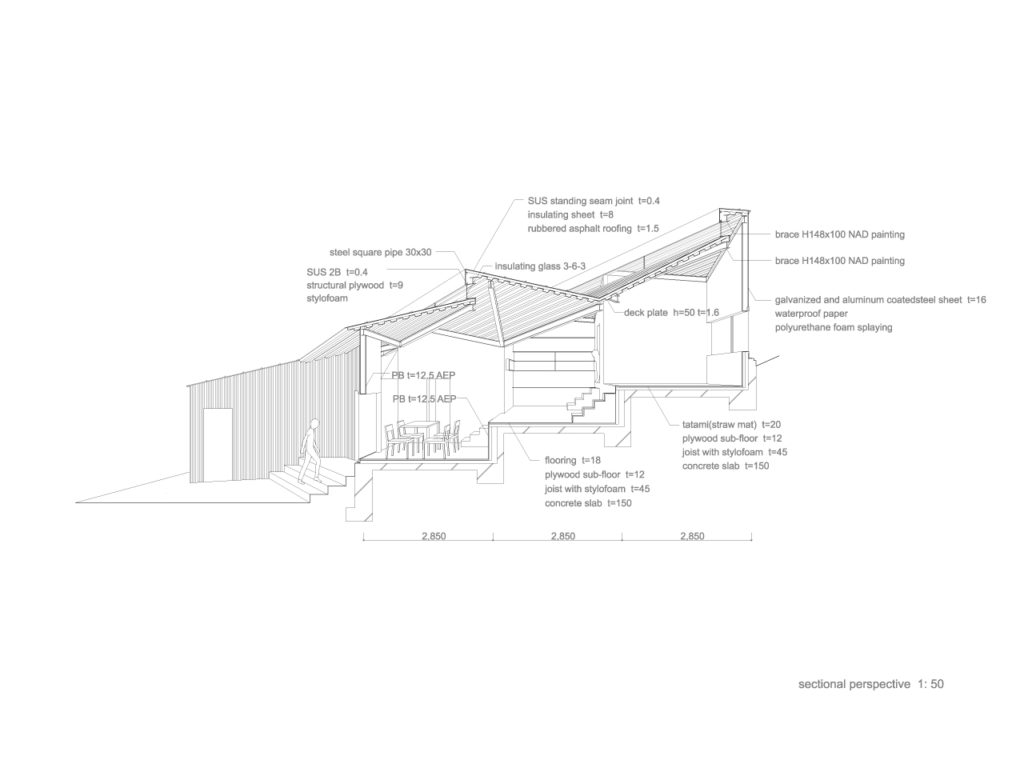© 2022 ALPHAVILLE. All Rights Reserved. | CONTACT

ROOF ON THE HILL
ROOF ON THE HILL
・Sloped roof
When I saw this site for the first time, I was impressed by the gently sloping slope and the hazy scenery of the city of Osaka beyond. However, there were almost no attempts to make use of the slopes in the newly developed surrounding residential area, and it was expected that sooner or later it would become a normal residential area. Therefore, I thought of a building with a roof over the slope so that this pleasant scenery can be preserved.
A small grid of about 3m x 3m was placed on the stepped site, and the bedroom, children’s room, and water area were surrounded by walls, and the remaining area was used as a dining room, living room, and Japanese-style room. A steel frame made of 100mm square pillars and 148x100mm H-shaped steel is used as a roof, and a deck plate is placed on top of it. As materials, steel frames of the same size were installed in two stages. There are only small windows for ventilation on all four sides, which are difficult to open, but from this high side light, you can see the sky and the city from various places in the room. To follow the slope, the roof that continues to the ridge in a sawtooth shape, together with the thin steel members that support it, creates a grove-like expanse in the room.
Natural terrain, application-specific grids, and 45-degree high-side lighting to set the environment. We repeated rational and geometrical manipulations to meet the functions and uses, but as a space, the floor changes in the height direction, and the ceiling intersects the room that connects at 90 degrees and the ceiling at 45 degrees. The result is a house with an unexpected view depending on the location.
・The construction method that takes advantage of the slope
The structure is a simple +45-degree orthogonal plane, but it is a dynamic and complicated framework in which almost all pillars have different heights due to the steps in the floor and the saw-toothed roof. Considering how to make the most of this, the PB was enclosed by the pillars and beams so that the inner wall would be 100mm thick, the same thickness as the pillars and beams. On the other hand, steel plate siding was selected for the exterior walls to wrap the framework, aluminum sashes were of the external type, and facilities such as water heaters and outdoor units were placed on three sides to wrap the house, and were not hidden. Combined with the 2B stainless steel finish roof that does not have a hairline and is close to the base material, it is an image of a machine placed on a slope.
・Roof with slits that traverse the space
On the other hand, the stepped slit in the roof that guides the light deep into the interior deprives the roof of its rigid floor function. A brace structure that aggregates horizontal force is not suitable for this building, so we decided to adopt a distributed Rahmen structure that bears the horizontal force on each pillar. The pillars are 100 mm square steel pipes, but the joints where the beams are attached in two stages are made of solid material so that the welding process is not complicated. Partial use of solid steel also increases the amount of steel material, eliminates the cost of diaphragms, cutting and welding, and can be said to be the best method without concerns about deterioration in joint performance.
use / housing
site / Hyogo, Japan
site area / 232.31m2
building area / 99.87m2
total floor area / 99.87m2
building scale / single storey
structure system / steel
structural engineer / Eisuke Mitsuda (Mitsuda Structural Consultants)
complete / 2010
photo credit / Kai Nakamura

